You may be wondering how to distinguish between squirrel poop vs rat poop , whether you have rodent droppings in your attic or wish to use scats to locate possible animals in your region.
Research papers, government organizations, educational websites, and pest control experts that are referenced throughout this article provided the data of squirrel poop vs rat poop in the table.
All forms of rodent droppings may look similar at first glance especially to the untrained eye. You can distinguish the two species, nevertheless, thanks to a few minor variations.
While the chipmunks, ground squirrels, tree squirrels do produce the pellet type scat the shape or size of the pellets is not as consistent as that of the rats or mice.
Although most have round edges with a cylindrical shape, raisin-like shaped pellets are also common.
Rat droppings look like mouse droppings, only larger. First pellets should invariably be black in colour, and are nearly always smooth and shiny to the touch. On the other hand, squirrel dropping appear to be larger in size and less shiny and smooth on the surface as compared to rat droppings.
sea also: 8 Best Examples Of Animals Like Chipmunks (with photos)
2. Shape
Both rodents produce pellet droppings, which are typically cylindrical in shape, as was previously described.
The first thing you can use to differentiate between the two is that rat droppings are usually pointed at the tip whereas the squirrel droppings will have rounded corners.
But this is not a completely accurate method and it is quite easy to confuse squirrel dropping for rat dropping, or vice versa, depending on the form.
These dropping cluster can therefore be used to differentiate between the two rodents. Squirrel feces scatter randomly and by putting the bait in pellets similar to barrel, raisin, or jelly beans. All kinds of pellets of various shapes are seen more often in a cluster.
Rat droppings are also scattered haphazardly but all of the pellets are somewhat larger and longer than traditional rat droppings and are more “sausage-shaped.”
3. Size
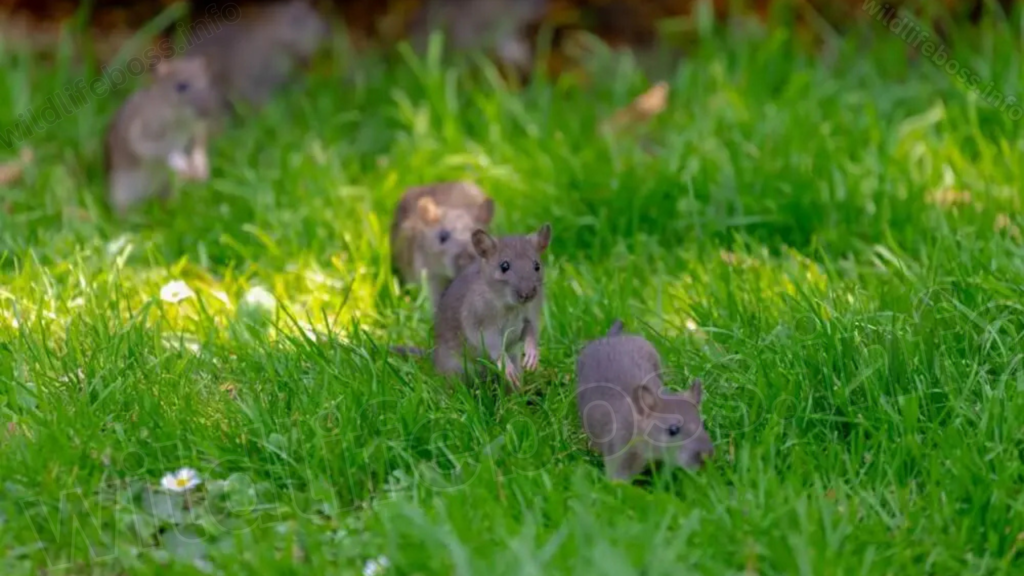
In addition to having similar shapes and appearances, squirrel poop vs rat poop are comparable in size.
The feces of squirrels are 1/8 inch thick and 3/8 inch long. Sometimes the pellet of a rat is small, though not necessarily thinner than squirrel scat, which is about the same in size.
However, it is important to remember that the size of the rat will determine how big the droppings are. They can actually reach lengths of up to half an inch and occasionally up to one inch.
4. Color
The color of the scat is another indicator that distinguishes squirrel poop vs rat poop. The droppings of both rodents are brown in different colors.
Squirrels can have gray or black waste with a sweeter fragrance, depending on their diet, however because of their varied diets, squirrel droppings are often reddish or light brown in hue.
Usually, rat feces is either black or dark brown. The moisture content is frequently the cause of the black hue; new droppings are darker than dried or aged ones.
As they dry up, the feces of squirrel poop vs rat poop get lighter and more brittle.
5. Consistency
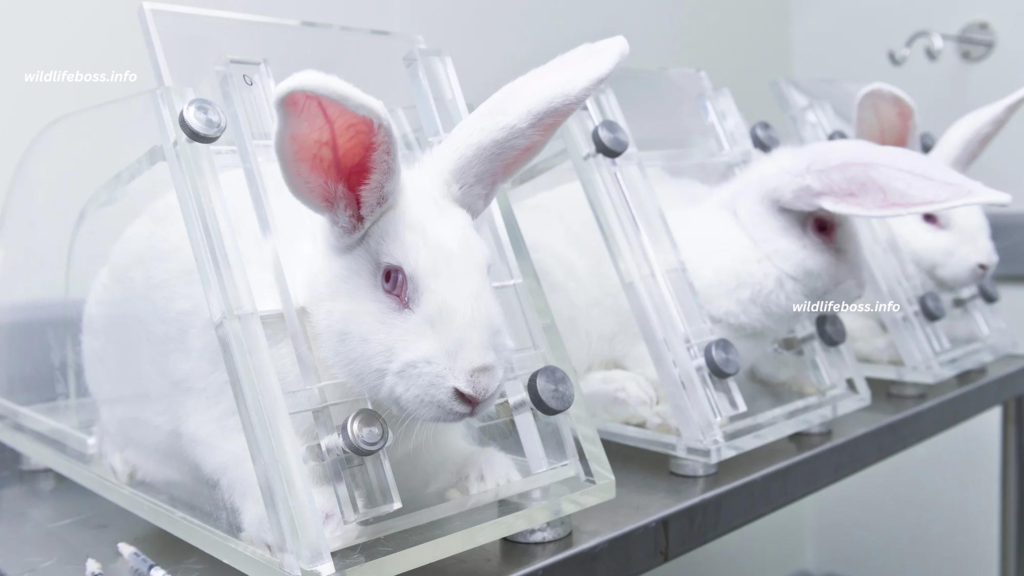
Squirrel poop vs rat poop droppings are equally hard when fresh, however rat feces is often smoother and glossier than squirrel dung.
The droppings of squirrels are frequently less uniform in substance and resemble raisins. The color of the same pellet may also vary due to the presence of visible traces of nuts and seeds.
As the feces dry up, they become brittle and have an earthy or sandy quality in both squirrel poop vs rat poop.
6. Content
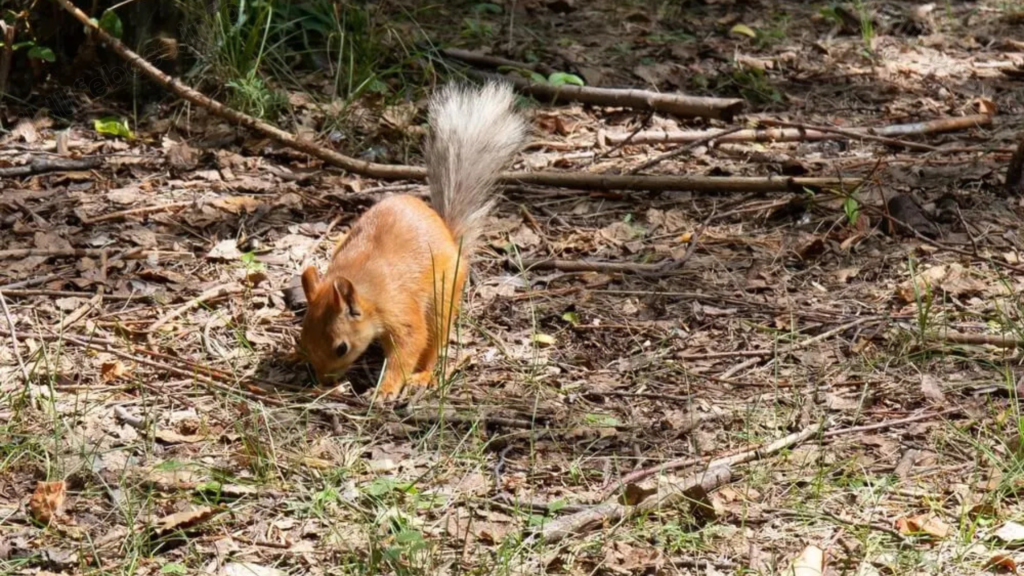
Traces of seeds and nuts may sometimes be found in squirrel scat, but it is very hard to determine a rat’s diet from its feces alone. Yet squirrel poop vs rat poop become different.
Research indicates that plants of the allium family and biscuitroot are preferred by squirrels. In addition, they enjoy pines and bluegrass, and their favorite nut appears to be walnuts.
In addition to eating grains, cereals, fruits, and other flora, rats are omnivores, meaning they also consume insects and other non-plant things.
Rats eat whatever they can find in pantries and food leftovers inside homes. They probably have smoother, more uniform feces than squirrels because of their omnivorous diet.
Conclusion:
Rat and squirrel feces are similar, therefore it might be difficult to tell which rodent it is only by looking at its scat.
The squirrel scat is often bigger and lighter in color. Additionally, it has easily detectable food residues and is less smooth than rat dung.
Squirrels have barrel-shaped droppings with circular edges, whereas rats have thinner, tapered droppings. Additionally, fresh rat droppings are often dark, with a range of dark brown to black.
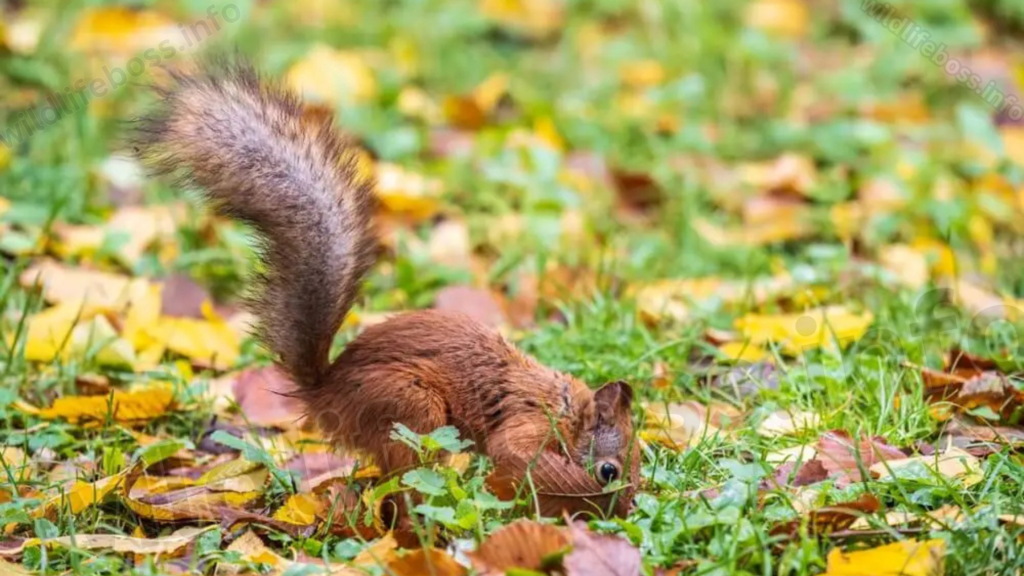

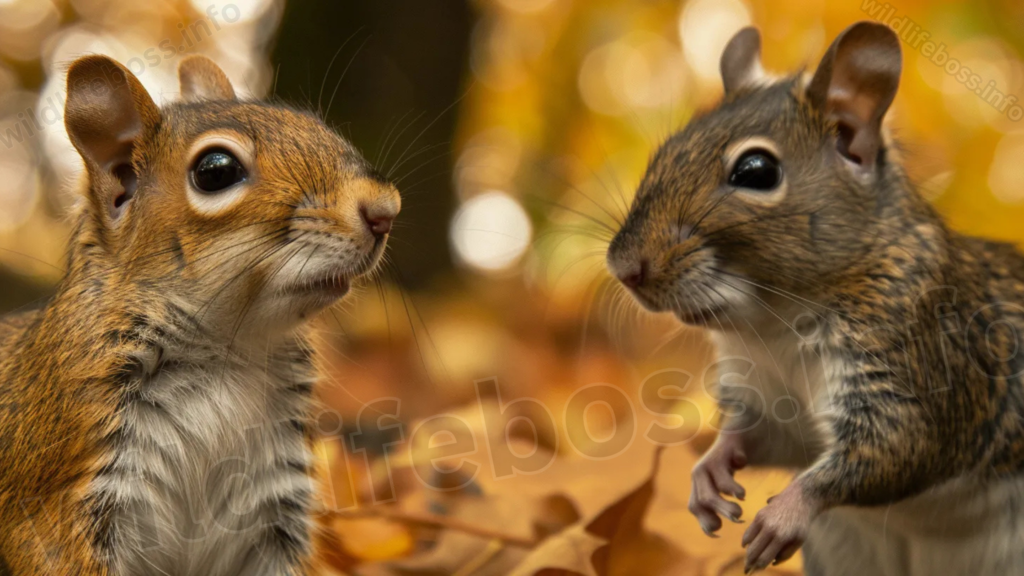



Pingback: 12 Best Types Of Squirrels(Amazing Information) - Wildlifeboss.info